What Are Nameservers and What Does NameServer Do?
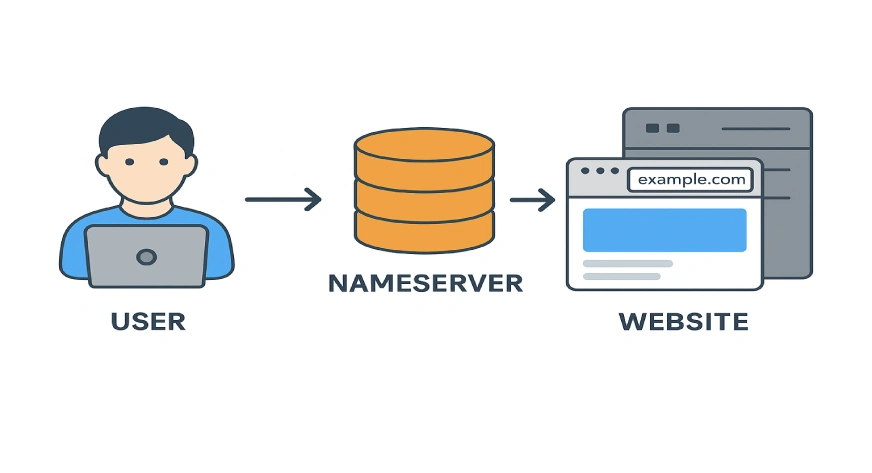
A nameserver is a part of the Domain Name System (DNS) that connects your domain name (like example.com) to the server where your website is hosted.
When you type a website address into your browser, you expect it to load instantly. Behind that quick response lies a vital system that makes it possible: the nameserver. Without nameservers, the internet as we know it wouldn’t function smoothly. If you own or plan to own a website, understanding what nameservers are and what they do can help you manage your domain better, fix problems faster, and make smarter hosting choices.
What Are Nameservers?
A nameserver is like a guide that tells your browser where to find a website. Think of it as a digital phonebook. Instead of remembering a long string of numbers (IP addresses), you just type a domain like example.com, and the nameserver points your request to the correct place.
For instance, when you enter google.com, your browser doesn’t know where that is by default. It asks a nameserver, which replies with the server’s IP address. Only then does your browser know where to fetch the site from.
How Do Nameservers Work Step by Step?
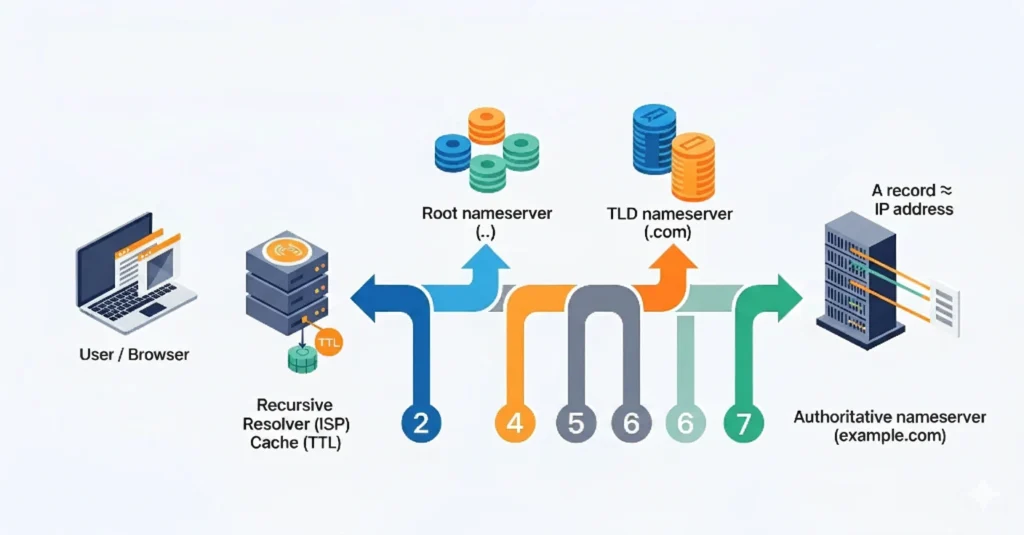
The process sounds complicated but becomes easy when broken down:
- You type a domain, like example.com, into your browser.
- Your request goes to a DNS resolver (your ISP usually provides one).
- The resolver asks the domain’s nameserver for the right IP address.
- The nameserver replies with the location of the hosting server.
- Your browser uses that IP address to load the website.
It’s like asking for directions: you know the house name (domain), but you need the exact street address (IP). The nameserver is the helpful guide giviThe Role of Nameservers in Website Management
Why Nameservers Are Essential for Your Website’s Daily Functioning?
- Connecting domains to hosting: Whenever you buy hosting from a provider like Bluehost or SiteGround, they’ll give you nameservers. You need to update your domain’s nameservers so traffic goes to the right host.
- Managing email: If you run business email (like info@yourcompany.com), the nameserver helps route emails to the right mail servers.
- Flexibility in hosting changes: Switching hosting providers? Updating nameservers ensures your domain points to the new server without downtime.
- Traffic control: Advanced providers offer features like directing users to the nearest server for faster loading.
Without proper nameservers, your domain is just a name without a destination.
Types of Nameservers
Not all nameservers work the same way. Depending on their role in the DNS system, they are classified into different types. Each plays a specific part in helping your browser find the right IP address for a domain. Let’s break them down:
1. Root Nameservers
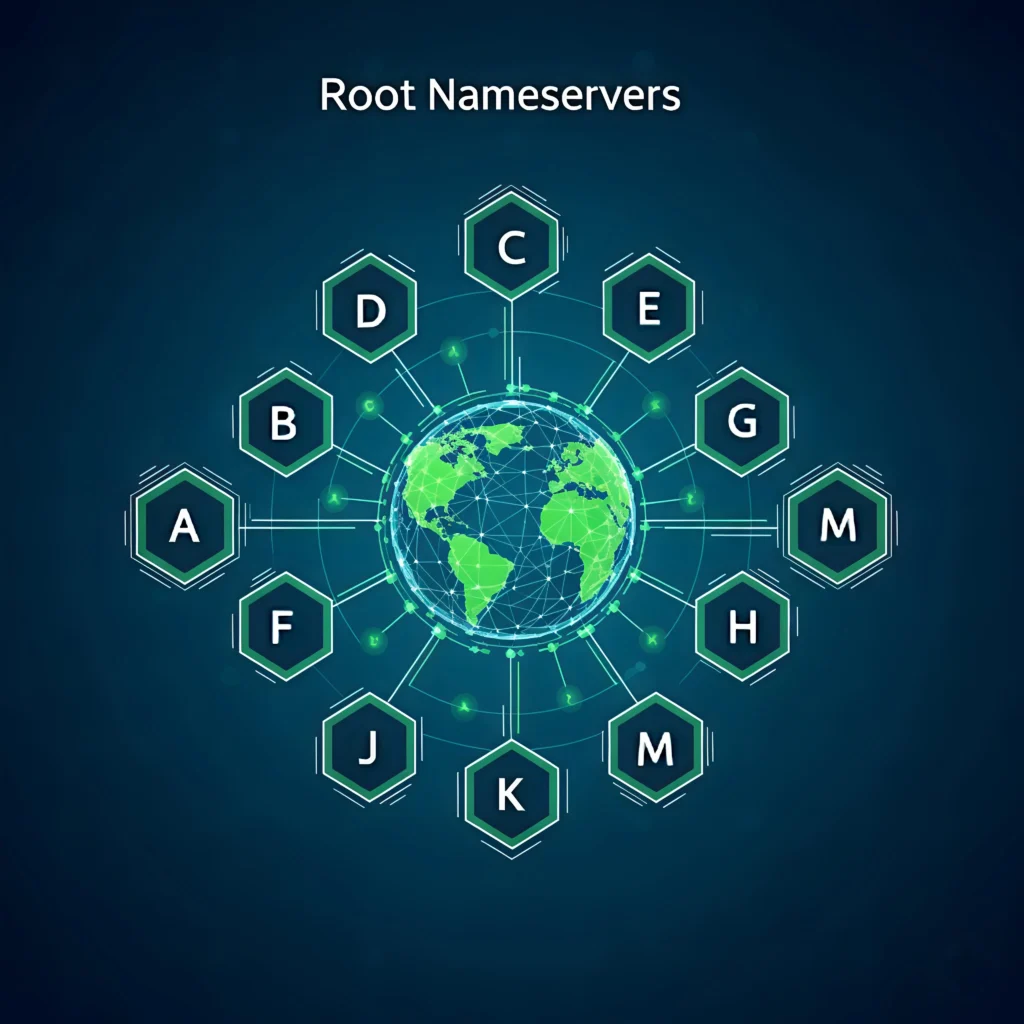
These are the starting point of the DNS system. Think of them as the index page of a giant internet phonebook.
- There are only 13 sets of root servers worldwide, managed by organizations like ICANN.
- They don’t give you the final IP address. Instead, they point you toward the TLD nameservers (for .com, .in, etc.).
- Example: If you type example.com, the root server directs your query to the .com TLD server.
2. TLD (Top-Level Domain) Nameservers
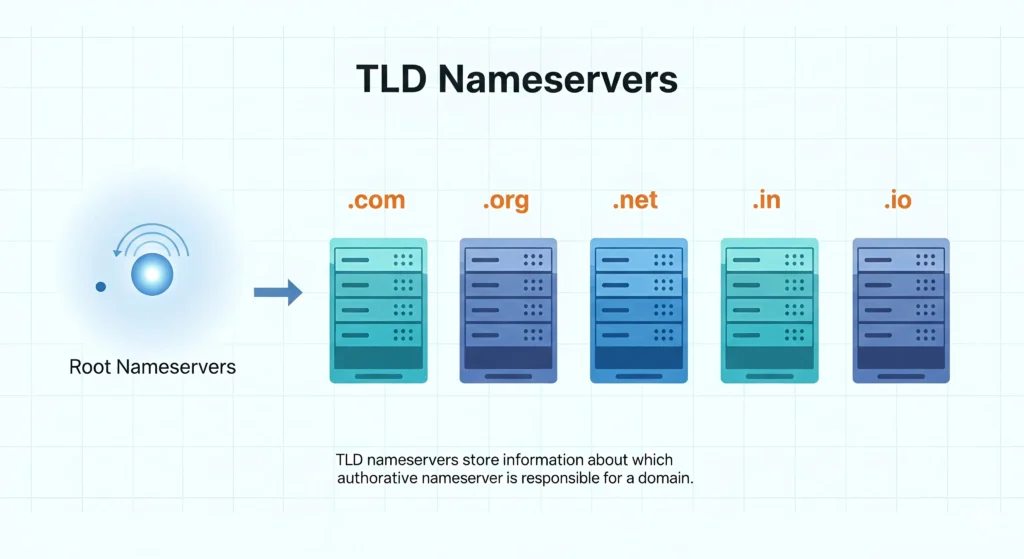
TLD servers handle extensions like .com, .org, .net, .in, and country codes.
- Their role is to keep track of all the domains under a specific extension.
- They don’t hold every record of a domain but know which authoritative nameserver is responsible for it.
- Example: For example.in, the .in TLD nameserver will point to the authoritative nameserver that stores the details for example.in.
3. Authoritative Nameservers
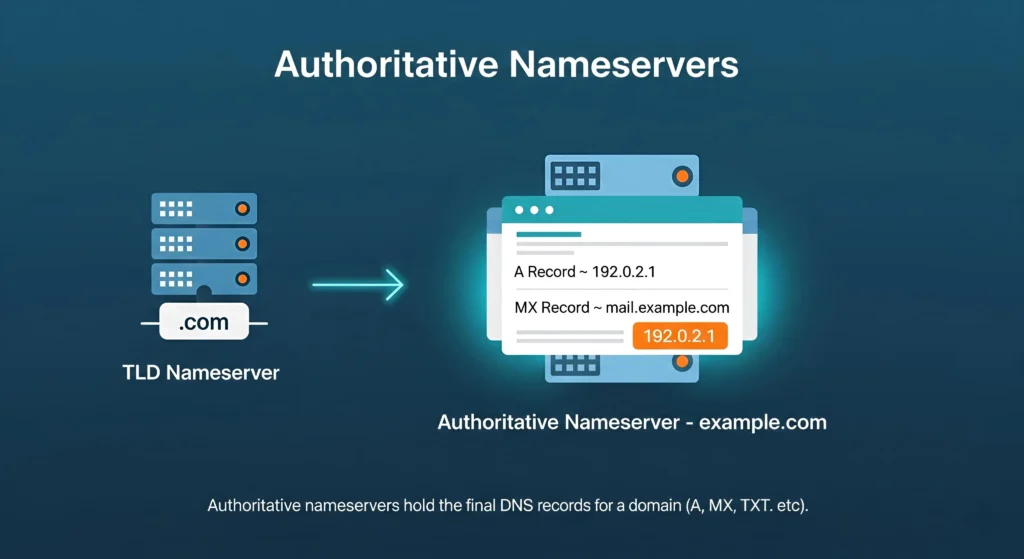
This is where the real answers live.
- Authoritative nameservers store all DNS records for a domain, such as A, CNAME, MX, TXT, etc.
- When your browser asks for the IP of example.com, this server provides the exact record.
- If you update your website host or email provider, you’re usually changing records at the authoritative nameserver.
4. Recursive (or Resolver) Nameservers
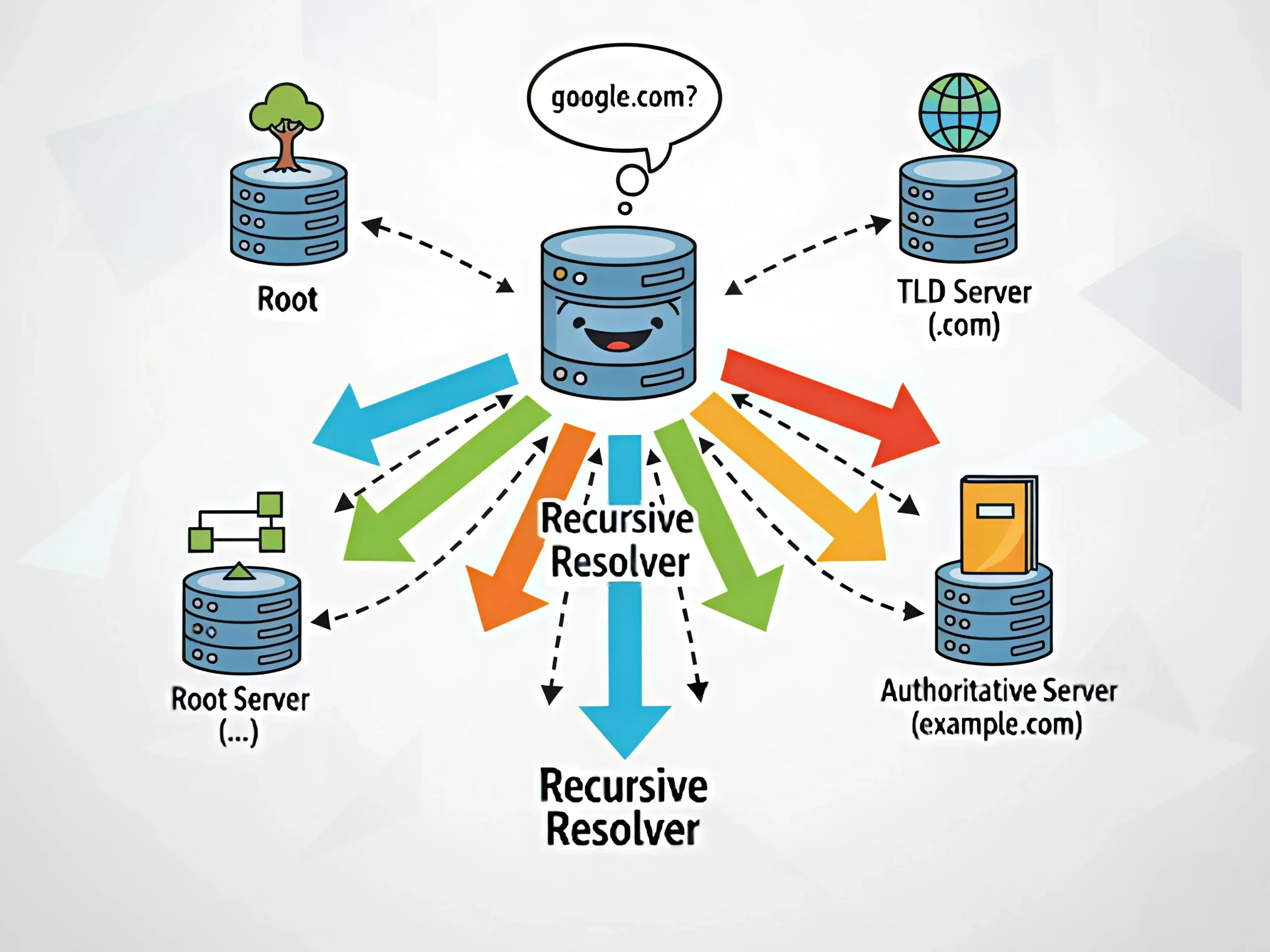
These are the “middlemen” that do the heavy lifting for your browser.
- When you type a domain, your ISP’s recursive resolver (or a public one like Google’s 8.8.8.8) starts the search.
- It queries the root → TLD → authoritative nameservers step by step until it finds the answer.
- To save time, recursive resolvers cache the results, so the next visitor doesn’t have to repeat the entire journey.
5. Primary and Secondary Nameservers
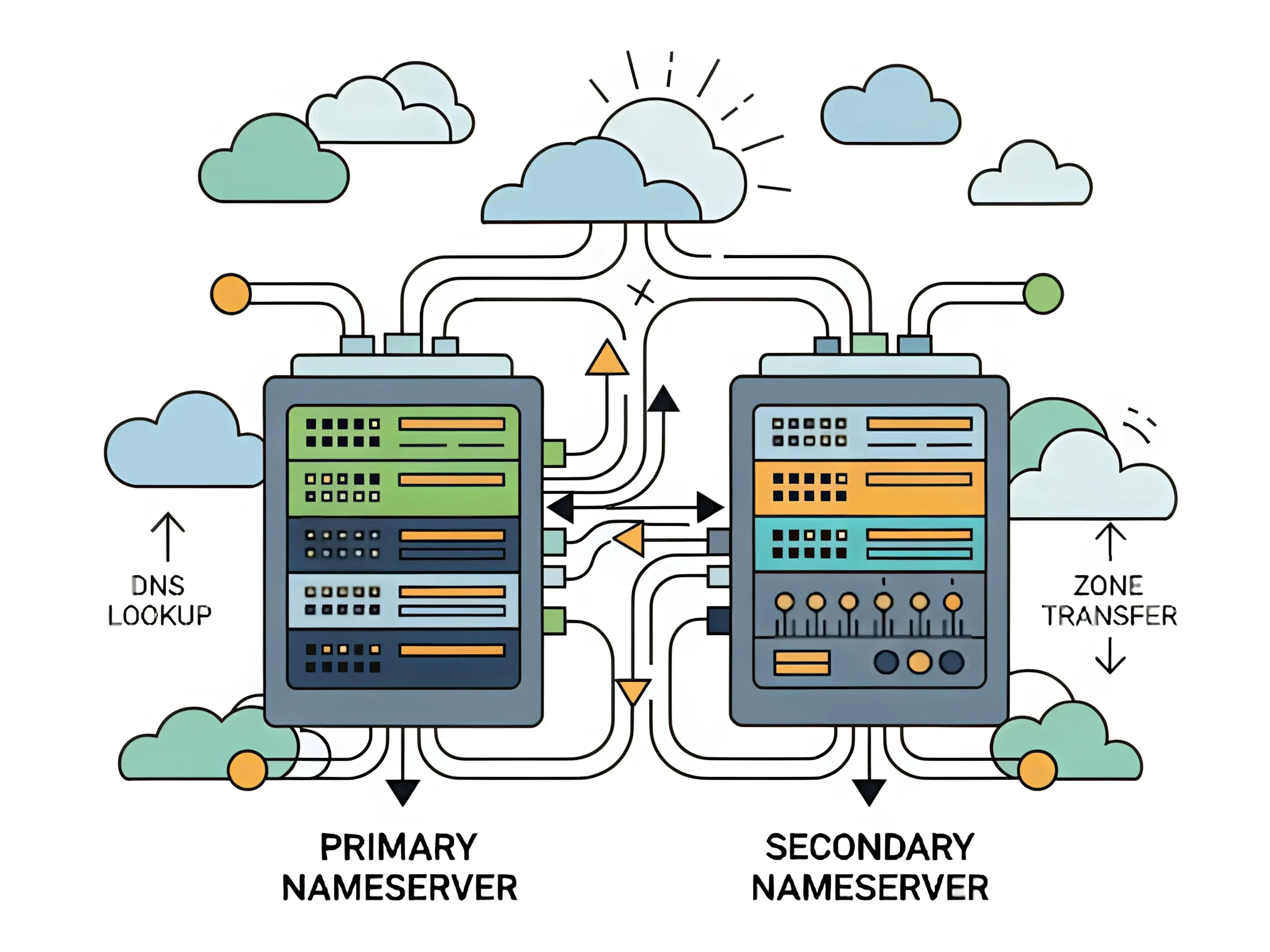
To avoid downtime, most domains use at least two nameservers:
- Primary Nameserver – the main source of DNS records.
- Secondary Nameserver – a backup copy that steps in if the primary is unreachable.
This redundancy ensures your domain keeps working even if one server fails.
6. Caching Nameservers
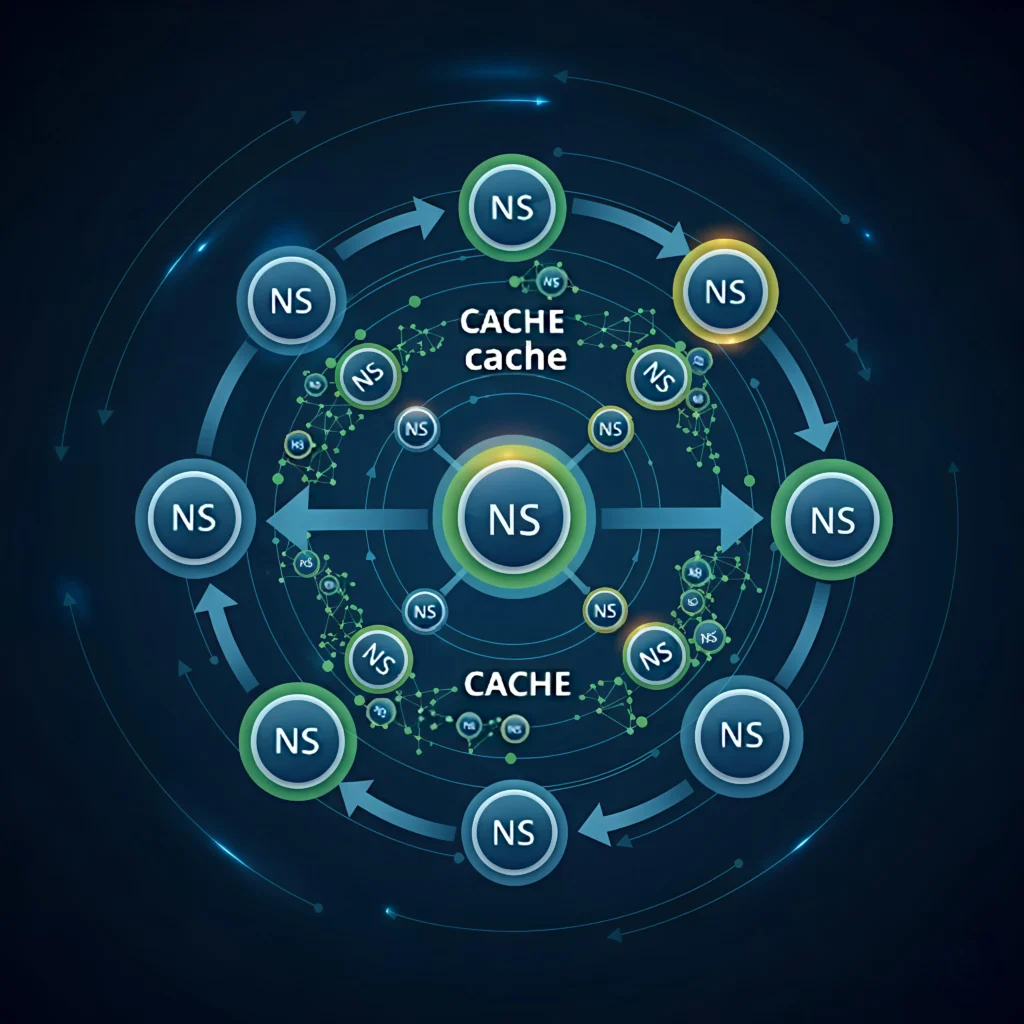
A caching nameserver stores DNS results temporarily (based on TTL—time to live).
- They speed up browsing since repeated lookups don’t require fresh queries every time.
- Example: If you visit google.com today, the caching nameserver remembers the IP and loads it faster the next time.
In short:
- Root → TLD → Authoritative nameservers form the backbone of DNS.
- Recursive and caching nameservers make the process faster.
- Primary/secondary nameservers keep your domain reliable.
Also Read , Which Technology is Best for Website Development
Why Nameservers Matter for Businesses?
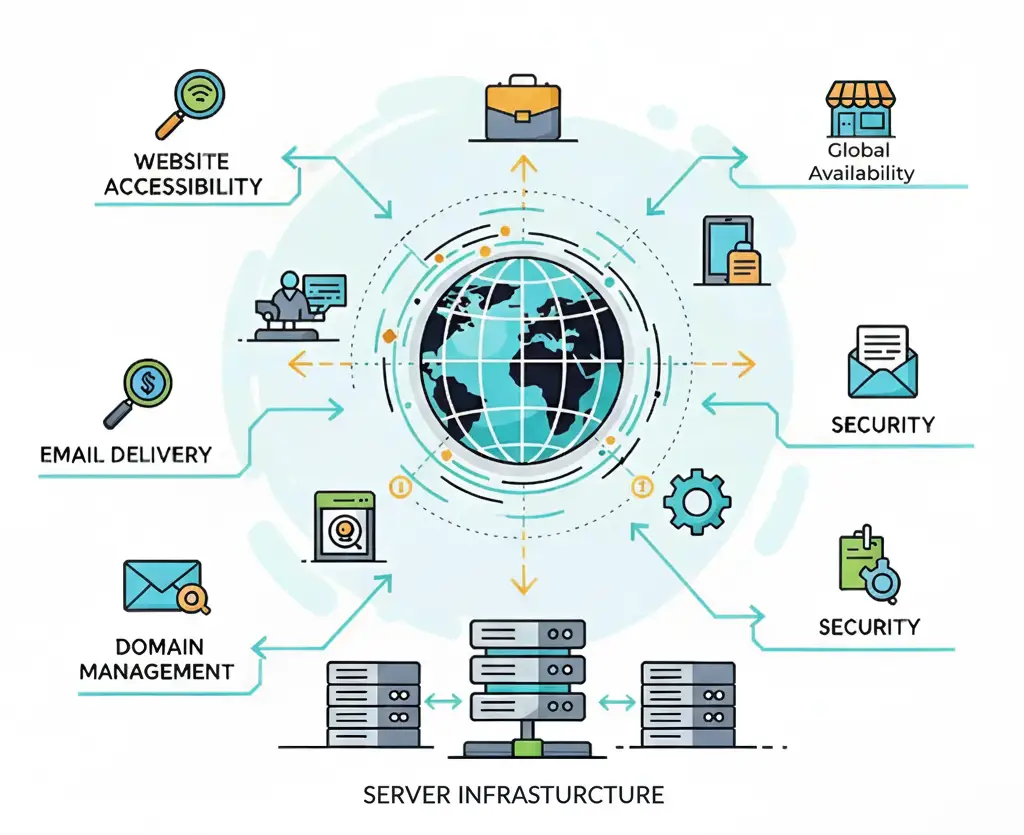
For a casual user, nameservers feel invisible. But for a business, they can make or break online success. Here’s why:
- Reliability: If your nameservers fail, your website becomes unreachable, even if your hosting is fine. Reliable nameservers keep your site live.
- Speed: Optimized DNS services reduce the time it takes to resolve your domain, making your site load faster.
- Security: Advanced providers like Cloudflare use their nameservers to block malicious traffic and absorb DDoS attacks.
- Scalability: Businesses expanding to global audiences can use nameservers that direct users to the nearest server, improving customer experience.
For example, a small e-commerce brand might start with registrar-provided nameservers, but as traffic grows, they could shift to managed DNS services for speed and security.
If you are confused which domain is best for your websites , .com or .in clear your understanding Now
Key Learnings
Understanding what nameservers are and what they do may sound technical, but the concept is straightforward. They’re the bridge between your domain name and your website’s server, ensuring people can reach your site reliably. From routing emails to keeping your website online, nameservers are the silent workers behind every successful domain.
Whether you’re running a small personal blog or a large e-commerce store, knowing how nameservers function helps you make smarter decisions about hosting, security, and growth.
Managing technical details like domains, nameservers, and hosting can feel overwhelming for business owners who just want to focus on growth. That’s where WebWorks Co. comes in. Beyond building websites, we support startups and growing brands with digital strategies that keep them visible, secure, and thriving online.
Frequently Asked Questions
Q1. What is a nameserver used for?
A nameserver is used to connect a domain name to the correct server by translating the domain into its IP address, so users can access the website.
Q2. Do you need to update nameservers often?
Not really. You only change them when switching hosts, setting up CDN services, or moving email providers.
Q3. What happens if you set them up wrong?
Your site may go offline until you fix the records. That’s why double-checking nameserver entries is important.
Q4. Are free nameservers reliable?
Yes, in many cases. Registrar-provided nameservers usually work fine for small websites. For larger businesses, premium DNS providers add reliability and speed.
